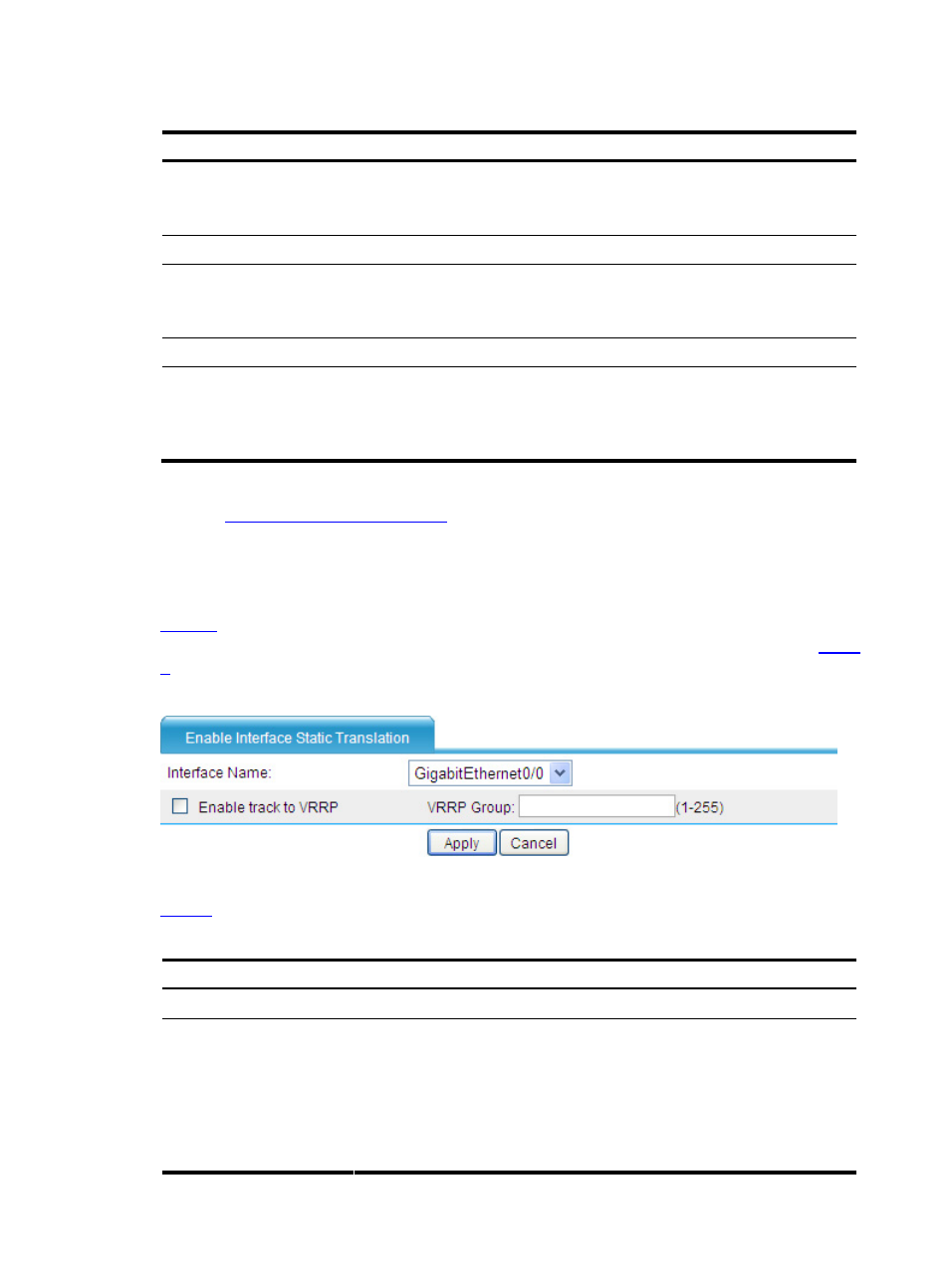Enabling static nat on an interface – H3C Technologies H3C SecPath F1000-E User Manual
Page 452

11
Table 6 Static NAT configuration item
Item Description
Internal VPN Instance
Specify a name of the VPN instance to which the internal IP addresses belong.
If no internal VPN instance is specified, this indicates that the internal address is
a common private network address.
Internal IP Address
Type an internal IP address for the static address mapping.
Global VPN Instance
Specify a name of the VPN instance to which the external IP addresses belong.
If no global VPN instance is specified, this indicates that the external address is
a common public network address.
Global IP Address
Type a public IP address for the static address mapping.
Network Mask
Specify the network mask for internal and public IP addresses.
If the network mask is specified, net-to-net static NAT is implemented. If no
network mask is specified, the default mask 255.255.255.255 is used. In this
case, one-to-one static NAT is delivered.
Static NAT configuration task list
.
Enabling Static NAT on an Interface
Select Firewall > NAT Policy > Static NAT from the navigation tree to enter the page shown in
. In the Interface Static Translation field where static NAT entries configured for interfaces
are displayed, click Add to enter the Enable Interface Static Translation page shown in
.
Figure 9 Enable Interface Static Translation page
describes the interface static NAT configuration items.
Table 7 Interface static NAT configuration items
Item Description
Interface Name
Select an interface to which static NAT is applied.
Enable track to VRRP
Configure whether to associate static NAT on an interface with a VRRP group,
and specify the VRRP group to be associated if you associate static NAT on an
interface with a VRRP group.
When two network devices implement both stateful failover and dynamic NAT,
•
Make sure the public address of an internal server on an interface is
associated with one VRRP group only; otherwise, the system associates the
